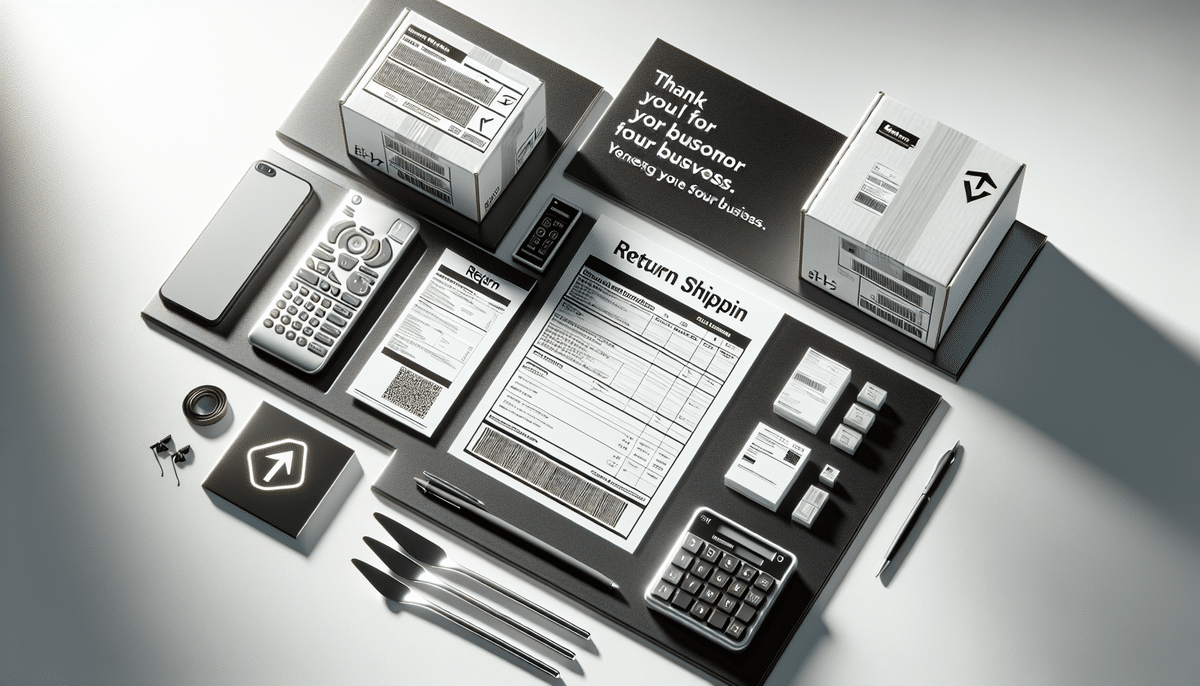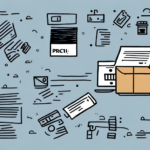Creating Return Labels: Guidelines Provided by FedEx
Return labels are an indispensable asset for businesses that ship products to customers. They simplify the return process, allowing customers to send back items effortlessly, which in turn fosters strong customer relationships. Streamlining the returns process through effective return labels not only enhances customer satisfaction but also optimizes your business operations. In this article, we delve into FedEx's guidelines for creating return labels, ensuring you implement them correctly and efficiently.
Why Return Labels Are Important for Your Business
Return labels play a critical role in managing product returns, making the process seamless for both sellers and buyers. According to ShipScience's 2023 Returns Statistics, approximately 30% of online purchases are returned, highlighting the significance of an efficient returns process.
Customers value the convenience of having a preprinted return shipping label included with their orders. This not only enhances their shopping experience but also demonstrates your commitment to customer satisfaction. A well-designed return label conveys that your company is proactive in ensuring customer happiness, which can lead to increased loyalty and repeat business.
Furthermore, return labels enable businesses to track returns systematically, helping identify patterns related to product quality, packaging issues, or customer preferences. By analyzing this data, you can make informed decisions to improve product offerings, enhance packaging, and refine customer service strategies. Consequently, return labels provide dual benefits: improving customer experience and offering actionable insights for business optimization.
Understanding the Different Types of Return Labels
There are primarily two types of return labels: prepaid and customer-paid. Prepaid return labels indicate that the seller covers the cost of return shipping, while customer-paid labels require the customer to bear this expense.
Choosing the right type of return label depends on various factors, including your budget, the reason for the return, and your customer’s expectations. For instance, if a return is due to a seller’s error, such as sending a defective product, offering a prepaid label can enhance customer satisfaction. Conversely, if the return is initiated by the customer’s change of mind, a customer-paid label might be more appropriate.
Clear communication regarding the type of return label and any associated costs is crucial to prevent misunderstandings and ensure a smooth return process.
How to Create a Return Label in FedEx: Step-by-Step Guide
Creating a return label with FedEx is straightforward. Follow these steps to generate and manage return labels efficiently:
- Navigate to the Ship tab on the FedEx website.
- Select Create a Shipment.
- Choose the package you intend to ship.
- Select the option to prepare a return label.
- Input your customer's details accurately.
- Generate the return shipping label.
- Print the label using a connected printer.
During the creation process, you can customize the return service by opting for package pickup from the customer’s location or allowing them to drop it off at a nearby FedEx location. Additionally, you can choose to send the return label via email or include it in the original shipment.
Common Mistakes to Avoid When Creating a Return Label
To ensure a hassle-free return experience for your customers, avoid the following common mistakes:
- Incorrect Customer Information: Double-check addresses and contact details to prevent delivery issues.
- Wrong Label Format: Ensure the label format complies with FedEx’s guidelines to avoid processing delays.
- Missing Return Address: Always include a correct and visible return address.
- Poor Label Attachment: Securely attach the label using clear packing tape to prevent it from peeling off during transit.
By steering clear of these errors, you enhance the efficiency of the returns process and maintain customer trust.
Tips for Designing an Effective and Professional-looking Return Label
Your return label is a representation of your brand. To ensure it looks professional and aligns with your brand identity, consider the following tips:
- Brand Consistency: Use your company's logo and brand colors to maintain a cohesive look.
- Simplicity: Keep the design clean and uncluttered for easy readability.
- Readable Fonts: Choose clear and legible fonts to ensure all information is easily understood.
Additionally, ensure that critical information such as the customer's name, address, and order number is prominently displayed to facilitate smooth processing. Including a personalized message, like a thank-you note, can also enhance customer relations and foster loyalty.
How to Print Your Return Label with FedEx
Printing your return label is a crucial step in the returns process. Follow these steps to print your FedEx return label:
- Connect your printer to your computer.
- Visit the Ship tab on the FedEx website.
- Select Create a Shipment.
- Choose the package you need to return.
- Select the option to prepare a return label.
- Enter your customer's details accurately.
- Generate the return shipping label.
- Click Print and follow the on-screen instructions.
If you lack a home printer, you can print your return label at any FedEx location by presenting the return label confirmation email. Should you need to modify your return label post-printing, log into your FedEx account, update the necessary details, and reprint the label with the revised information.
How to Attach Your Return Label to Your Package Correctly
Properly attaching the return label ensures that your package is processed without delays. Here’s how to do it correctly:
- Cover Existing Labels: Obscure any previous shipping labels or barcodes to prevent confusion.
- Secure Attachment: Use clear packing tape to firmly affix the label to the package.
- Prominent Placement: Position the label on the top or front of the package for easy visibility.
Ensure the label is legible and correctly printed to avoid any misrouting. For fragile or high-value items, consider additional padding and protective measures to safeguard the contents during transit. Utilizing FedEx’s tracking and insurance options can provide extra security for important shipments.
Tracking Your Returns: How FedEx Can Help You Monitor Your Packages
Efficient tracking of returns is vital for timely processing and customer satisfaction. FedEx offers several tools to help you monitor your return shipments:
- Tracking Numbers: Each package is assigned a unique tracking number, allowing real-time monitoring.
- Delivery Notifications: Receive updates via email or text when your package is delivered.
- Shipment Alerts: Get notified about significant events, such as delays or changes in delivery schedules.
These tools provide transparency and peace of mind, ensuring that both you and your customers can track the status of return shipments effectively.
Additionally, FedEx’s Hold at Location feature allows customers to redirect their packages to a nearby FedEx location for convenient pick-up, especially useful when customers are unavailable to receive deliveries at their addresses.
FedEx’s mobile app further enhances tracking capabilities, enabling you to monitor packages, receive instant notifications, and manage shipments on-the-go.
Best Practices for Customer Service When Dealing with Returns
Exceptional customer service during the returns process can significantly enhance customer loyalty. Implement the following best practices:
- Simplify the Process: Make returns as effortless as possible for your customers.
- Clear Instructions: Provide straightforward and detailed return guidelines.
- Responsive Communication: Quickly address customer inquiries and resolve complaints.
- Additional Value: Offer incentives like discounts or special offers during the return process to retain customers.
Ensure your staff is well-trained and knowledgeable about the returns process to handle customer interactions professionally and efficiently. Additionally, maintain a transparent and fair return policy that clearly outlines the conditions for returns, associated fees, and any restrictions to manage customer expectations effectively.
The Importance of Clear Communication in the Returns Process
Effective communication is the cornerstone of a smooth returns process. Clearly inform your customers about each step of the return process, providing precise instructions on how to complete a return. Ensure that all communications include accurate information regarding shipping times, costs, and any other pertinent details to prevent confusion and enhance the overall return experience.
Analyzing Your Returns Data: What It Tells You About Your Business
Analyzing returns data offers valuable insights into your business operations. By examining factors such as the reasons for returns, frequency of returns, and the types of products most often returned, you can identify areas for improvement. For example, a high return rate for a specific product might indicate a quality or sizing issue that needs addressing.
Utilize this data to refine your product offerings, enhance quality control, and adjust your return policies as necessary. Businesses with low return rates might investigate whether their products meet customer expectations or if their return policies are too restrictive.
Effective data analysis helps in making informed decisions that can lead to reduced return rates, improved product quality, and enhanced customer satisfaction.
How FedEx's Return Solutions Can Benefit Your Business
FedEx offers comprehensive return solutions that can bring several advantages to your business:
- Increased Customer Satisfaction: Simplified return processes enhance the overall customer experience.
- Streamlined Returns Process: Efficient management of returns saves time and resources.
- Cost Efficiency: Optimize return shipping costs through FedEx’s competitive rates.
- Enhanced Operational Efficiency: Automated tracking and management tools improve the handling of returns.
Leveraging FedEx’s return solutions allows you to manage returns more effectively, reduce operational costs, and build stronger relationships with your customers.
Conclusion: The Value of Streamlining Your Returns Process with FedEx
Implementing a streamlined returns process using return labels is invaluable for enhancing customer experience and optimizing business operations. By adhering to FedEx's guidelines for creating and managing return labels, you ensure that returns are handled efficiently and accurately. FedEx’s robust tools and solutions support a seamless returns process, enabling your business to build and maintain strong customer relationships while leveraging return data to drive continuous improvement.








